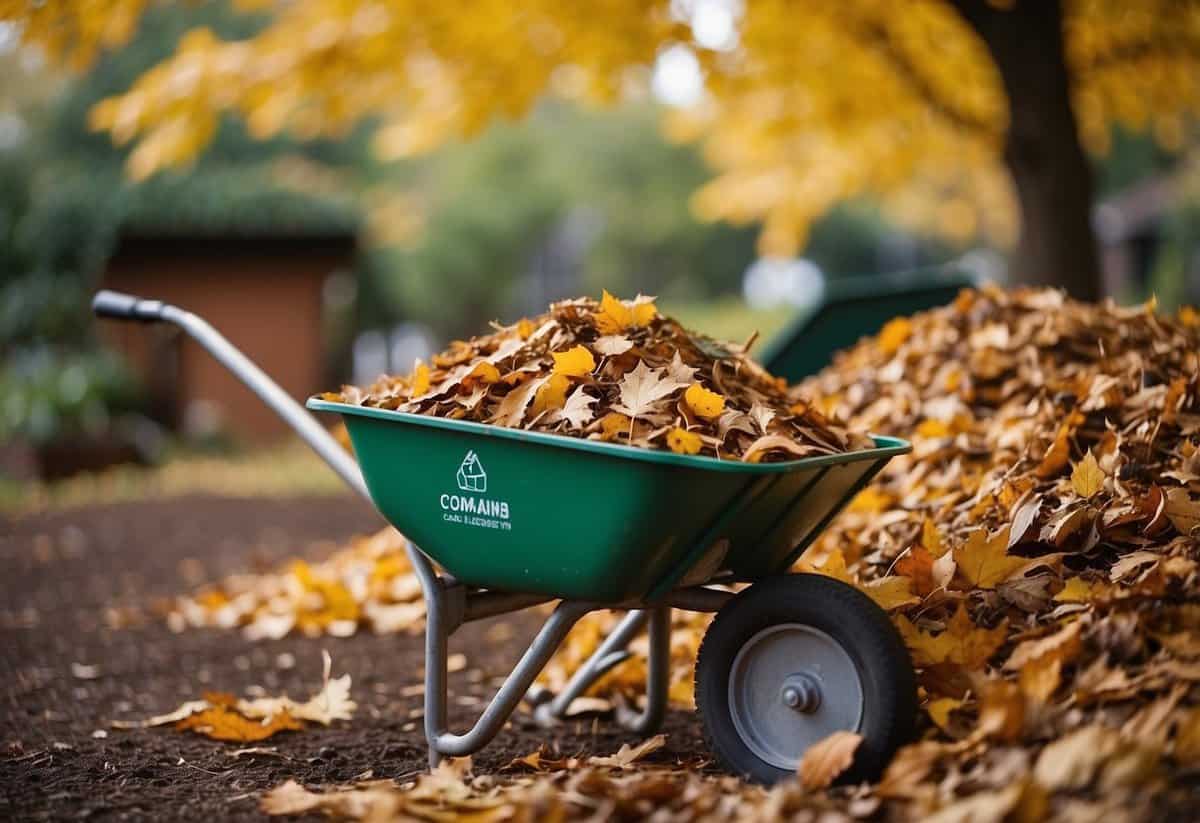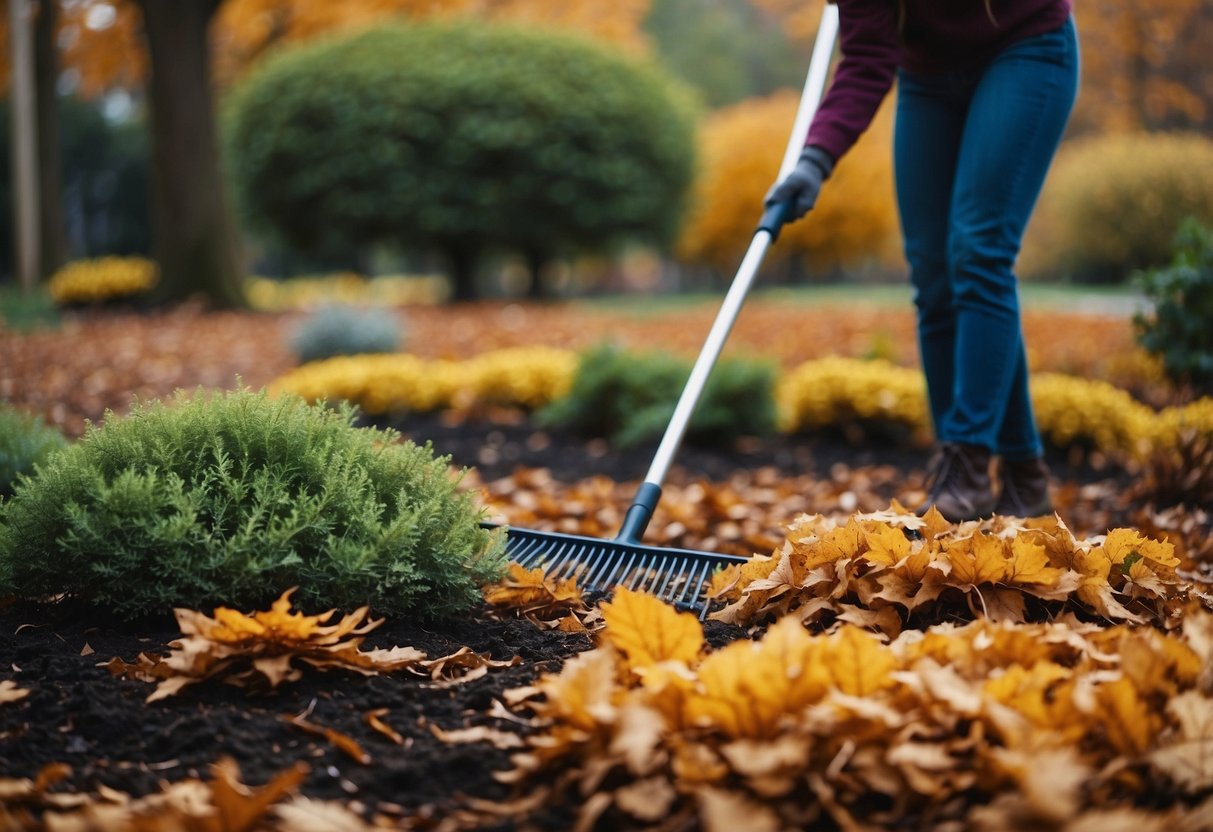Fall Garden Clean Up Tips: Get Ready for a Gorgeous Spring
As the warm days of summer fade, it’s time to start thinking about preparing your garden for the coming seasons. Fall garden cleanup is an essential task to ensure that your garden remains healthy and vibrant. By taking the right steps now, you will make gardening in the spring much easier and more enjoyable.

How do you get your garden ready for the colder months while setting the stage for a beautiful spring? Whether you’re a seasoned gardener or a beginner, knowing these essential fall cleanup tips can make a big difference. With a little effort and some helpful advice, you can protect your plants, enrich your soil, and keep your garden tools in top shape.
1) Remove Dead Plants

Removing dead plants from your garden is crucial. Dead plants can attract pests and harbor diseases. By clearing them out, you improve the health of your garden.
Start by pulling up any spent vegetable plants. For example, removing dead annual plants helps prevent mold and mildew.
Don’t forget to dispose of any diseased plants properly. Do not compost them, as they can spread disease to healthy plants. Instead, throw them in the trash to keep your garden clean and healthy.
2) Trim Perennials

Trimming perennials in the fall helps keep your garden healthy. Start with plants like bearded iris, bee balm, and garden phlox. Cutting these back can prevent diseases and pests from overwintering.
Cut peonies and bed irises to a height of 3-5 inches. This keeps your garden neat and ready for next spring.
3) Clear Fallen Leaves

Fallen leaves can make your garden look untidy and can hide pests or diseases. Use a rake, leaf blower, or lawn mower to gather them up. If you prefer an easier way, consider using this method to clean up fallen leaves without heavy tools.
Leaves can be composted or turned into leaf mold, a great mulch for your garden. To make leaf mold, pack the leaves in a container or garbage bags, wet them, and let them decompose over six months to a year. For more tips, check out these fall leaf cleanup tips.
4) Clean Garden Tools

It’s important to clean your garden tools before storing them for the winter.
First, remove any dirt or debris on your tools. Use a brush or an old rag to scrub them clean.
Next, wash them with soapy water and dry thoroughly to prevent rust.
Finally, sharpen blades and spray metal parts with a light coat of oil. This keeps them in good condition and ready for spring.
Take care of your tools, and they will take care of your garden!
5) Plant Cover Crops

Planting cover crops is an excellent way to protect your soil during the fall and winter months. These crops help prevent erosion and improve soil health.
Cover crops like rye or clover can add nutrients back into the soil. They also help suppress weeds and reduce pests.
In the spring, you can till them into the soil to boost its organic matter. This sets your garden up for a successful growing season.
6) Mulch Garden Beds

Mulch in the fall to save time in the spring. It helps keep the soil moist and prevents weed growth.
Use organic materials like shredded leaves, straw, or wood chips. Spread a layer about 2-3 inches thick.
Cooler fall weather makes mulching more pleasant. It also provides insulation for plant roots during winter.
7) Divide Perennials

In fall, consider dividing your perennials to keep them healthy and promote new growth.
Plants like columbines, which have extensive root systems, can be tricky to divide, but it’s worth the effort. Using a garden fork, gently lift the plant from the ground to avoid damaging the roots.
Pay attention to plants such as bee balm and black-eyed Susan. They spread quickly and dividing them will help keep your garden looking neat.
To learn more about dividing perennials, check out this guide.
8) Store Garden Hoses

Make sure to drain your garden hoses completely. Water left inside can freeze and cause cracks. After draining, coil the hoses neatly.
Store them indoors or in a shed to protect them from harsh winter weather. This helps them last longer and keeps them ready for use in the spring.
Check for any leaks or damages before storing. Fix any issues now, so you don’t have to deal with them later.
9) Prune Trees and Shrubs

Pruning trees and shrubs in fall helps them grow better in the spring.
For smaller branches, cut back to an outward-facing bud or intersecting branches. This promotes healthy growth and shape.
For larger branches, use a pruning saw. Make a cut underneath the branch about 6 to 12 inches from the trunk. This prevents the branch from tearing as it falls.
Pruning helps prevent disease and increases air circulation around your plants. Always use clean, sharp tools to make clean cuts.
10) Weed Garden Beds

Weeding your garden beds is crucial in the fall. Weeds like crabgrass and thistle can develop seed heads during this time. If they remain, they can reseed and overtake your garden next year.
To make weeding easier, water your garden a few hours beforehand. This softens the soil, making it simpler to pull out weeds completely.
Removing weeds also helps prevent diseases and pests. Weeds can harbor unwanted insects and germs that can spread to your precious plants. Regular weeding ensures your garden stays healthy and ready for the next planting season.
Essential Tools for Fall Garden Clean Up

For a successful fall garden clean up, you need the right tools. These tools will help you manage leaves, compost, and overall garden debris efficiently.
Choosing the Right Rake
Picking the right rake is crucial. Leaf rakes have narrow tines that are good for gathering leaves without damaging plants. Bow rakes have sturdy teeth and are perfect for moving heavy debris like stones and soil.
A good rake should be lightweight but strong. Look for a rake with an adjustable handle, which makes it easier to use for people of different heights. Ergonomic handles help reduce strain on your hands and back during long garden sessions.
Metal tines are durable, while plastic tines are lighter but may break more easily. A collapsible rake can save storage space. When choosing a rake, consider the size of your garden. Larger gardens might benefit from a wider rake to cover more ground quickly.
Compost Bins and Their Benefits
Compost bins are a great addition to your garden clean up routine. They help turn garden waste into nutrient-rich compost. This compost improves soil quality and helps plants grow better.
When selecting a compost bin, aeration is important. A bin with ventilation holes allows air to circulate, speeding up the decomposition process. Consider choosing a bin with multiple compartments. This way, you can separate fresh waste from mature compost.
Tumbler composters are easy to use because you can rotate them to mix the compost. This keeps the decomposition process active. If you prefer a more traditional approach, a stationary bin will work too, but you’ll need a pitchfork or turning tool to mix the compost manually.
Bins made of durable materials like plastic or metal are ideal for withstanding outdoor conditions. Place your compost bin in a convenient spot, preferably near your garden, to make transferring waste easier.
Preparing Your Soil for Winter

To ensure your garden is ready for next spring, it’s essential to address soil health before winter. Key steps include testing soil pH levels and adding organic matter for nutrient enrichment.
Testing Soil pH Levels
Testing soil pH levels is crucial for understanding your soil’s condition. You can buy a pH test kit from a garden center. Choose a test spot in your garden, dig a small hole, and mix in distilled water to form a muddy solution. Insert the pH tester and wait for the reading.
Ideal pH levels range from 6.0 to 7.0 for most plants. If the pH is too low, adding lime can raise it. Too high? Consider adding sulfur. Retest after amending to ensure the pH is now optimal. Accurate pH levels help your plants absorb nutrients efficiently, promoting healthy growth.
Adding Organic Matter
Adding organic matter improves soil structure, drainage, and nutrient content. Spread a 2- to 3-inch layer of compost over your garden beds. No need to dig it in; fall precipitation and soil organisms will help it integrate over winter.
Manure is another great option, but ensure it’s well-aged to avoid burning plants. You can add leaves, grass clippings, and kitchen scraps to your compost pile. Organic matter feeds beneficial microbes, retains moisture, and enhances root health.
Tip: Cover crops like mustard or clover can add nutrients when tilled in spring. Keep your soil alive and fertile for the next growing season.
Protecting Perennials and Shrubs

Protecting your perennials and shrubs during fall is important for their health in the spring. You need to know how to mulch and prune correctly to ensure they thrive through the colder months.
Mulching Techniques
Mulching helps insulate your plants from harsh winter weather. Use a 2-4 inch layer of mulch around your perennials and shrubs. Straw, shredded leaves, and wood chips are all great options.
When applying mulch, make sure to keep it away from the base of the plants. This helps prevent rot and disease. For shrubs, mulch the area under the drip line to protect root zones.
Do not use fresh grass clippings, as they can mat and cause mold. Be careful not to overload the mulch, as too much can suffocate roots and prevent water from reaching them.
Pruning Best Practices
Pruning during fall helps plants stay healthy and grow better when spring arrives. Remove any dead or diseased branches to stop the spread of disease. Cut back overgrown branches to help air and light reach the center of the plant.
For perennials, cut them down to a few inches above the ground after they’ve stopped blooming. When pruning shrubs, be careful not to remove more than one-third of the plant at a time. This helps maintain the plant’s shape and health. Use sharp, clean tools to make clean cuts and avoid damage.







